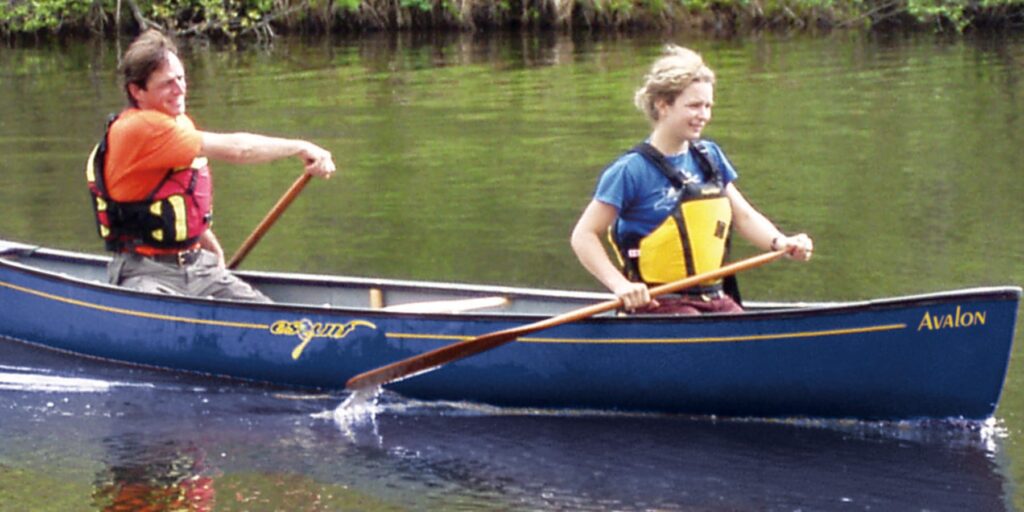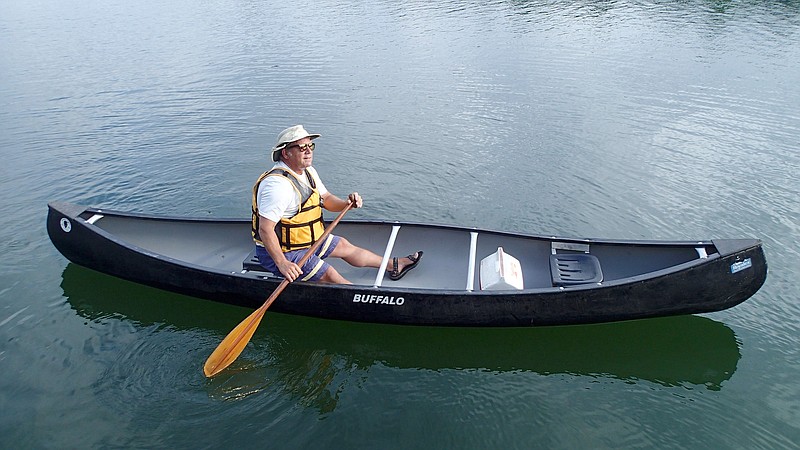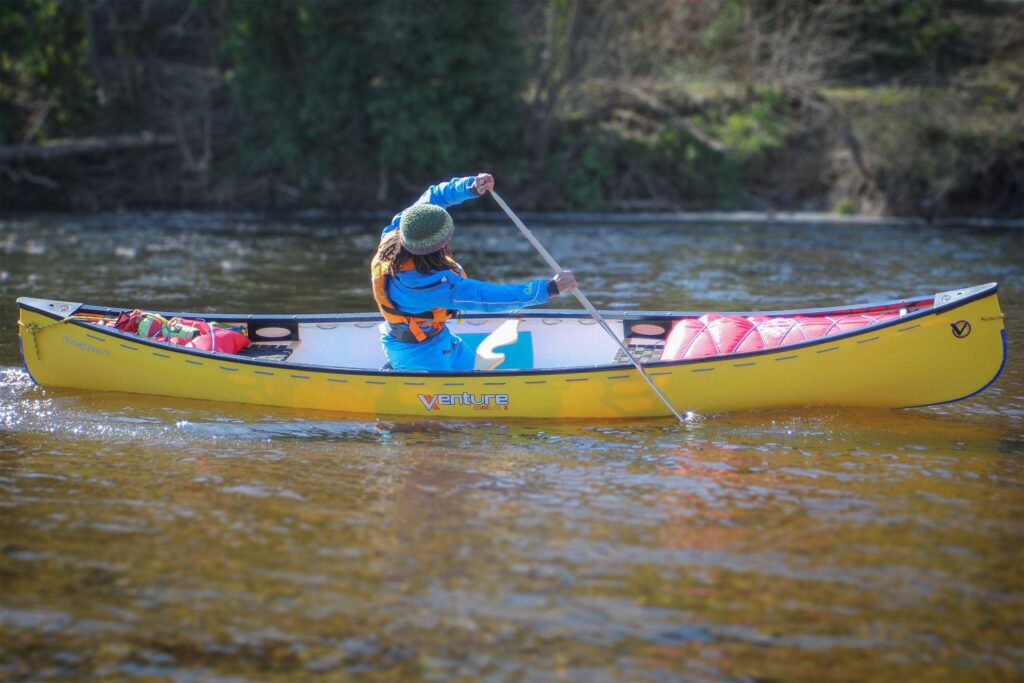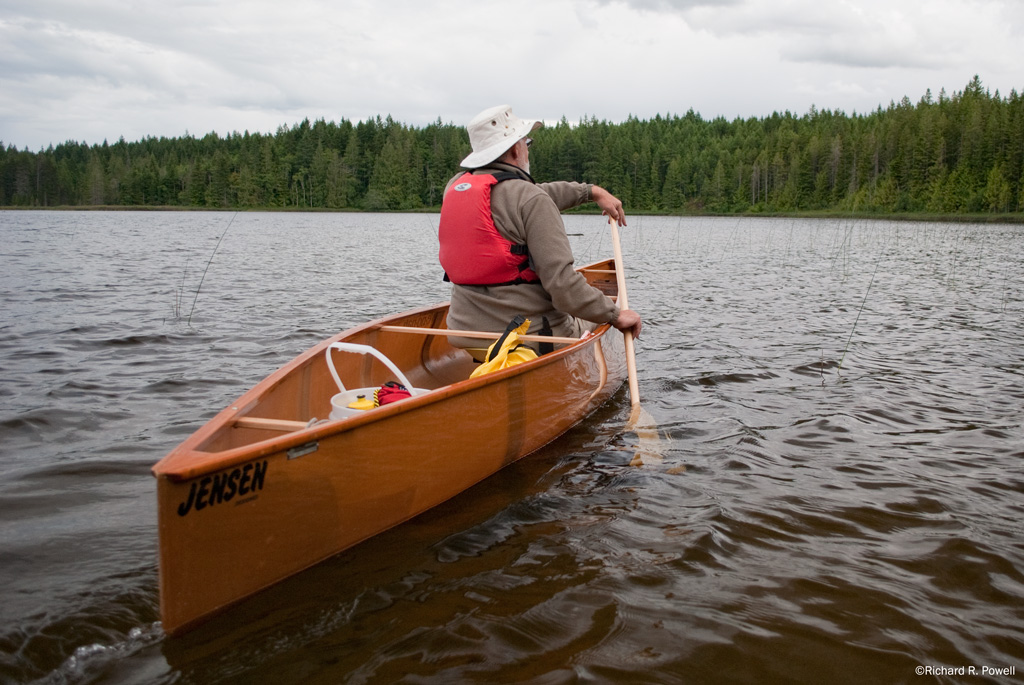Is standing the best way to paddle a canoe? While kneeling and sitting are often overlooked paddling positions, each has unique benefits. Kneelers tout increased balance and control while sitters enjoy less back strain.
After testing both, I was surprised to find kneeling provided a stronger, more centered stroke. Sitting let me admire the passing scenery.
For longer journeys, I now alternate between the two. Want to enhance your canoeing experience? Join me as I dive deeper into the kneel vs sit debate.
Kneeling in a Canoe
Kneeling in a canoe is a popular way to paddle. It has both good and not-so-good sides. Let’s explore them in simple terms.

Advantages of Kneeling in a Canoe
- Superior Stability
- When you kneel, your body is lower in the canoe. This makes the canoe less likely to tip over. It’s really helpful in wavy water or for new paddlers.
- Think of it like sitting on the floor instead of a tall stool. You feel more stable on the floor, right?
- Enhanced Power and Control
- Kneeling lets you use your legs more when you paddle. This means you can push the paddle harder and move the canoe exactly where you want it.
- It’s like using your whole body to push a door open, instead of just one hand.
- Improved Balance and Agility
- In a kneeling position, you can quickly adjust to changes in the water. It’s easier to keep the canoe steady and safe.
- Imagine playing a game where you have to quickly dodge or move. Kneeling helps you do that in a canoe.
Disadvantages of Kneeling on a Canoe
- Comfort Issues
- Kneeling for a long time can be hard, especially if your knees aren’t used to it. It can feel uncomfortable after a while.
- Think about how your legs feel after sitting on your knees for a long time. It can get sore, right?
- Knee Strain
- This position can be tough on your knees. If you have knee pain or if you’re kneeling on a hard surface, it can hurt.
- It’s like when you kneel on a hard floor and your knees feel sore.
- Entry and Exit Challenges
- Getting in and out of the canoe is trickier when you’re kneeling. You have to be careful not to tip the canoe.
- Imagine trying to climb into a small tent. It’s a bit like that.
If you’re new to canoeing or have knee problems, you might need to think about whether kneeling is right for you.
Sitting in a Canoe
Sitting in a canoe is another way to paddle. It’s different from kneeling and has its own good and not-so-good points. Let’s simply look at them.

Advantages of Sitting on a Canoe
- Unmatched Comfort
- Sitting down is more comfortable, especially if you’re going to be in the canoe for a long time. It’s like sitting in a chair instead of on the floor.
- You can relax more and enjoy the ride, which is great for long trips.
- Ease of Entry and Exit
- Getting in and out of the canoe is easier when you’re sitting. It’s less tricky than kneeling.
- Think of it like stepping into a bathtub. It’s easier to step in and sit down than to kneel.
- Less Physically Demanding
- Sitting doesn’t require as much effort from your body. This is good for people who might find kneeling hard.
- It’s like walking instead of running. Walking is easier and you can do it for longer.
Disadvantages of Sitting on a Canoe
- Compromised Stability
- When you sit, you’re higher up in the canoe. This can make the canoe more likely to tip over, especially when it’s windy or if you move quickly.
- Imagine sitting on a high stool. You have to be careful not to fall off, right?
- Reduced Power and Control
- Sitting means you use your legs less when paddling. This can make your strokes weaker and it’s harder to steer the canoe exactly where you want.
- Think of trying to push something heavy with just your arms instead of using your whole body.
- Lower Balance and Agility
- It’s harder to move quickly and keep balanced when you’re sitting. Reacting to waves or sudden moves can be more difficult.
- Imagine trying to dodge a ball while sitting. It’s harder than when you’re standing, isn’t it?
Sitting in a canoe is comfortable and easy, especially for long trips or for those who find kneeling hard. But, it can make the canoe more tippy and you might not be able to paddle as strongly or steer as easily.
Comparative Analysis Kneeling vs Sitting
Ever hopped in a canoe and wondered, “Should I kneel or sit?” It’s a paddling puzzle that’s stumped newbies and seasoned paddlers alike. Here’s a comparative analysis.
Stability Showdown:
Kneeling lowers your center of gravity, making your canoe feel like a steady rock in the water. This is especially helpful for beginners or when tackling choppy waves. Sitting, on the other hand, is like balancing a house of cards – a single gust of wind can send you teetering!
Power Play:
Kneeling engages your leg muscles, pumping up your paddling power like a mini engine. This translates to faster strokes and smoother gliding, perfect for conquering currents or racing your buddies. Sitting, while comfy, takes more arm work and can feel sluggish, making it ideal for leisurely cruises.
Maneuvering Mayhem:
Kneeling allows for lightning-fast turns and quick adjustments. Imagine yourself as a ninja, weaving through twists and turns with laser-sharp precision. Sitting, with its higher center of gravity, feels like steering a lumbering barge – great for stable journeys, but not ideal for tight squeezes.
Endurance Expedition:
Sitting wins the comfort crown. Imagine paddling for hours without your knees screaming in protest! But don’t underestimate kneeling – its engaged core and leg muscles can help you go longer, as long as you take breaks to stretch those bendy bones.
So, who wins the ultimate paddle position crown?
It’s a tie! Kneeling reigns supreme for stability, power, and maneuverability, while sitting wins the comfort and long-distance battles. Ultimately, it’s about finding your perfect balance – mix and match, kneel for rapids, sit for serene stretches, and discover your paddling paradise!
Remember, there’s no right or wrong answer, just happy paddling!
Choosing the Right Position
Choosing whether to kneel or sit in a canoe depends on a few things. Let’s break it down simply.
- Your Fitness and Experience
- If you’re new to canoeing, kneeling might feel more stable. It’s like using training wheels on a bike.
- Experienced paddlers might like sitting better. It’s more comfortable, especially on long trips.
- Type of Paddling
- Kneeling is good for rough waters, like in whitewater, or if you’re paddling alone. It helps you control the canoe better.
- Sitting is great for calm, relaxing trips. It’s like choosing a comfy chair for a long movie.
- Try Both Positions
- Test out kneeling and sitting. See which one feels better and helps you paddle the way you want.
- It’s like trying different shoes to see which ones are more comfortable.
- Other Things to Consider
- The design of your canoe matters. Some canoes are better for sitting, others for kneeling.
- Think about the water you’ll be in. Calm lakes? Sitting might be better. Wavy rivers? Kneeling could help.
- Lastly, what you like best is important. Choose what feels right for you.
Try both, think about your comfort and the water, and go with what feels right. Remember, the goal is to have a safe and fun time on the water!

Final Touch
Whether to kneel or sit in a canoe is a personal choice, influenced by your experience, the type of paddling, and the canoe’s design.
Both positions have their benefits: kneeling for stability and control, and sitting for comfort and ease. The key is to try both and see what works best for you, ensuring a safe and enjoyable paddling experience.





[…] Kneeling: Begin by kneeling in the middle of the board. Your knees should be on either side of the […]
[…] a canoe, you kneel or sit on a bench. In a kayak, you sit low with your legs stretched out. Your seating affects balance and […]
[…] Position matters in canoeing. The front person sits near the bow. The back person sits near the stern. Balance is key. Distribute weight evenly. This helps the canoe stay stable. […]
[…] Next, think about how you paddle. Leisurely paddlers may prefer a shorter paddle. It offers better control. Adventurous types may opt for a longer paddle. It provides more speed. […]